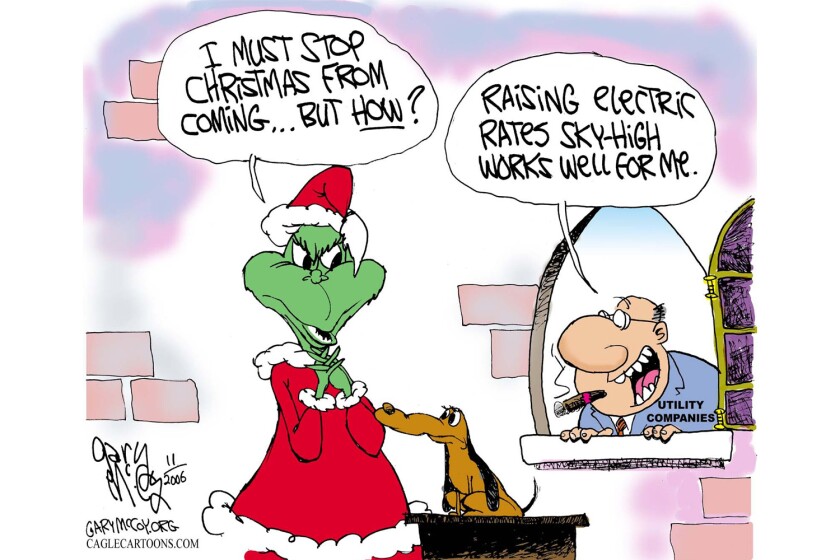The News Tribune’s Nov. 22 "Our View” editorial, “Guess we could have left the lights on all these years," argued that residential energy conservation and clean energy are among the reasons for Minnesota Power’s proposed rate increase. The real culprit was in the editorial, too — but only if you read very carefully.
Household energy conservation over the years barely registers as a blip on Minnesota Power’s revenue. In fact, residential energy sales actually grew last year, and residential customers used about as much electricity in 2020 as they did in 2014.
Electricity use by large industries, on the other hand, declined sharply at the outset of COVID-19, and Minnesota Power’s revenues declined with it. Mines and mills account for more than 70% of Minnesota Power’s electricity sales, and the industries are cyclical.
As Minnesota Power stated in a filing to the Minnesota Public Utilities Commission, “Even when some of these customers are operating at relatively high production levels, others are not, and the risk of steep declines is ever-present. For example, in 2020, two of the Company’s large industrial customers unexpectedly reduced their energy demand by an amount equivalent to the entire residential class of customers.”
In other words, this proposed rate hike is being driven by the boom-bust cycles of large industries. The impact of residential customers wisely installing LED bulbs and high-efficiency appliances cannot hold a candle to such enormous reductions in electricity use.
ADVERTISEMENT
This dynamic is not new. Each of Minnesota Power’s general-rate increases, dating back more than a decade, came after big declines in industrial electric sales. When industry is down, Minnesota Power asks for more money from its remaining customers.
Minnesota Power is a for-profit company with shareholder earnings to protect. (Also hidden in the rate hike is an 11% increase on shareholders’ return on equity, paid for by Minnesota Power customers.) The mines and mills, too, want to protect their profits. Ratepayers are stuck between the competing financial interests of some very large companies.
For the solution, Minnesota Power has again turned to its age-old insurance policy: residents and businesses whose power needs are consistent year over year.
The good news for residential customers is that this strategy is unlikely to work. Minnesota Power’s rates must be approved by the state Public Utilities Commission, and the PUC never approves increases as high as a utility requests. In 2016, Minnesota Power asked to hike residential rates by more than 18%, and the approval was for 3.5%. The PUC will be considering this rate hike request over the next year, and commissioners welcome public input.
The PUC already rejected a 2020 request for existing customers to cover Minnesota Power’s lost revenues when the pandemic reduced industrial production. We with the Citizens Utility Board will be happy to help the PUC find its way to slashing this latest rate-hike request, too.
For people concerned with their energy bills, assistance is available. Contact the Arrowhead Economic Opportunity Agency (AEOA) or your local Community Action Partnership to apply for energy assistance and weatherization assistance. If you qualify, Minnesota Power has an additional program called CARE that will keep your electric bills to no more than 3% of your household income.
You can always contact us at the Citizens Utility Board, too, with any questions or concerns: 1-800-646-6282 or info@cubminnesota.org.
Annie Levenson-Falk is executive director of the St. Paul-based Citizens Utility Board of Minnesota (cubminnesota.org), a nonprofit advocate for residential and small-business utility consumers.
ADVERTISEMENT









